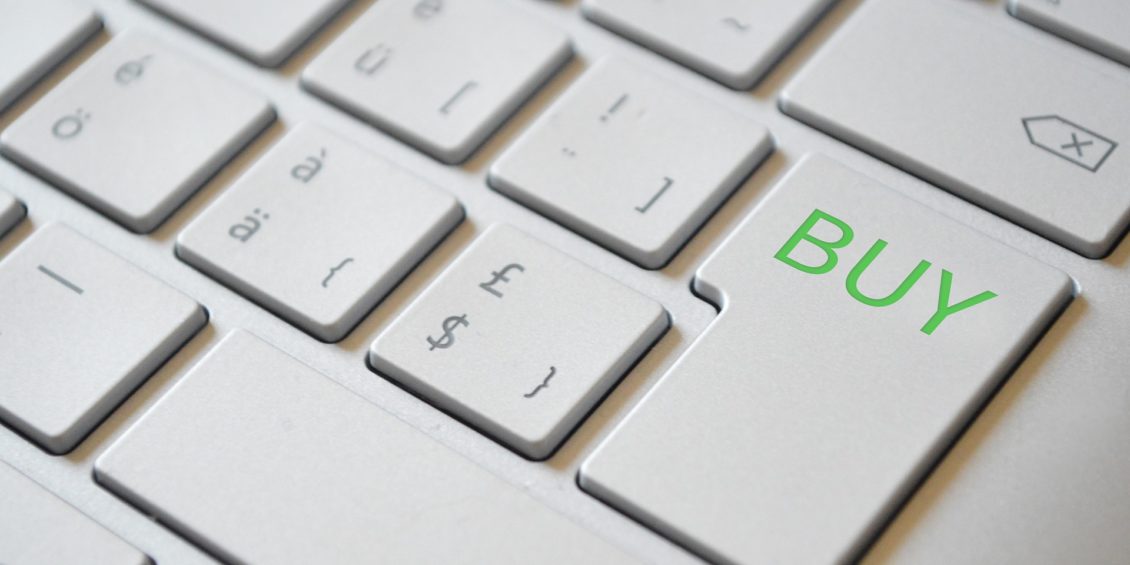
I’m going to go on the record here to tell you that it’s a good idea to present as many payment options as possible to customers at checkout. You just don’t wade into any of these options with your eyes closed.
Just like BNPL and other alternative payment options, introducing one-click payments will probably boost sales to some degree. After all, buyers are just trying to pay for the things they want. The easier you make it for them, the more they’re likely to spend.
No payment method is perfect. That said, as long as you don’t have unrealistic expectations (and take necessary precautions), including one-click payments could be an excellent idea for your business.
What is One-Click Checkout?
One-click checkout allows consumers to set default payment credentials and shipping information to make future purchases with the click of a single button. This “checkout fast-lane” bypasses the usual checkout rigmarole by enabling consumers to process payments via a single finger tap or mouse click and processes credentials they already have on file with the payment provider.
It’s honestly that easy.
The system auto-fills the customer’s credit card and verification information. This allows them to process payments without additional data entry.
The Benefits of One-Click Checkout
Originally introduced by retail giant Amazon Inc., one-click checkout has since been made available throughout the payment ecosystem. Arguably, the platform is a win-win across the board. Customers get a streamlined checkout process with fewer hassles, and merchants benefit from higher conversion, less cart abandonment, and greater long-term customer value.
Actionable merchant benefits break down like this:
- Fewer abandoned carts: A complicated checkout process is the third most-common reason for cart abandonment. One-click checkout gives buyers fewer reasons to walk away before finalizing sales.
- More impulse buys: When you overload a customer with forms and checkout procedures, you’re sacrificing the opportunity to entice last-minute additions to the order. The faster your checkout process, the better.
- Increased enthusiasm: To be perfectly frank, if a checkout process is too complex and tedious, I’ll shop somewhere else. Many consumers feel this way, too. They’ll prioritize brands that make checkout fast, easy, and uncomplicated.
- Easily canceled mistakes: When a customer purchases the wrong item, they’re going to cancel the sale anyway. Stopping mistaken transactions before they go through is less hassle for everyone and decreases the odds that it will lead to a chargeback down the road.
- Maximized security: Checkout systems are protected by security standards and guidelines like PCI DSS, helping to reduce fraudulent activity. Any crucial data is tokenized, meaning it’s swapped for a non-sensitive equivalent with no exploitable value.
What are the Downsides?
Yes, like most new technologies there is a downside to one-click checkout. And yes, it relates to fraud. However, one-click checkout isn’t inherently prone to criminal fraud like other checkout methods. As I mentioned above, tokenization technology is built into the process. Once the information used to process the payment has been used, it cannot be used again.
On the other hand, the fraud that one-click checkout can lead to is of the first-party fraud variety. This means you’re likely to see more cases of friendly fraud when you include one-click payments at checkout.
Although you just read my explanation of why friction in the checkout process is never really welcome by consumers, it does provide some benefit. Lengthier checkouts force shoppers to slow down and really consider a purchase before hitting “submit.” Aside from this, the easier it is to make an impulse buy, the greater the chances of buyer’s remorse. Buyer’s remorse, as we all know, often leads to chargebacks.
So which is it? Is one-click checkout a good thing or a bad idea? The answer is going to depend on the nature of your business.
Is One-Click Checkout Right for Me?
One-click checkout offers lots of advantages, but it’s not necessarily going to work for everyone. Benefits vary according to the business model, the items sold, and other factors. Having said that, ask yourself a few questions before you decide to take the leap:
Does my business rely on repeat customers?
Regular customers are obviously going to be the primary audience for one-click checkout.
If your business model is structured to optimize customer loyalty, then one-click checkout could really streamline orders and improve the customer experience. If not, and you mostly deal with infrequent or one-time customers, offering single-click payments will likely be a waste of time.
How costly are products and services?
One-click checkout tends to work better with low-ticket sales. Conversely, a pricier or personalized product is generally subject to more research prior to purchasing.
You want buyers to do their research, and weigh their options before completing a purchase, especially with higher-ticket purchases. A high-value transaction could be a real pain and source of revenue loss if the buyer chooses to dispute the purchase.
Is transparency an issue?
Customers prefer brands that leave little to the imagination.
I’m not kidding here; 72% of consumers prefer to shop with brands that don’t surprise them with hidden fees and details before, during, or after checkout. However, if the thought of being upfront with all of your product, shipping, and return details bothers you… then one-click checkout is not for you.
Be warned, though: any post-purchase surprises could be the subject of your next round of disputes.
One-Click Checkout: A Good Idea, but Execution is Crucial
At the end of the day, no one can tell you if adding alternative payment options at checkout will help or harm your business. It’s up to you to decide what does and doesn’t work for you.
My only input here is that whatever you choose to do, do it with open eyes and realistic expectations. Most crucially, have a willingness to prepare and plan for any eventuality.
